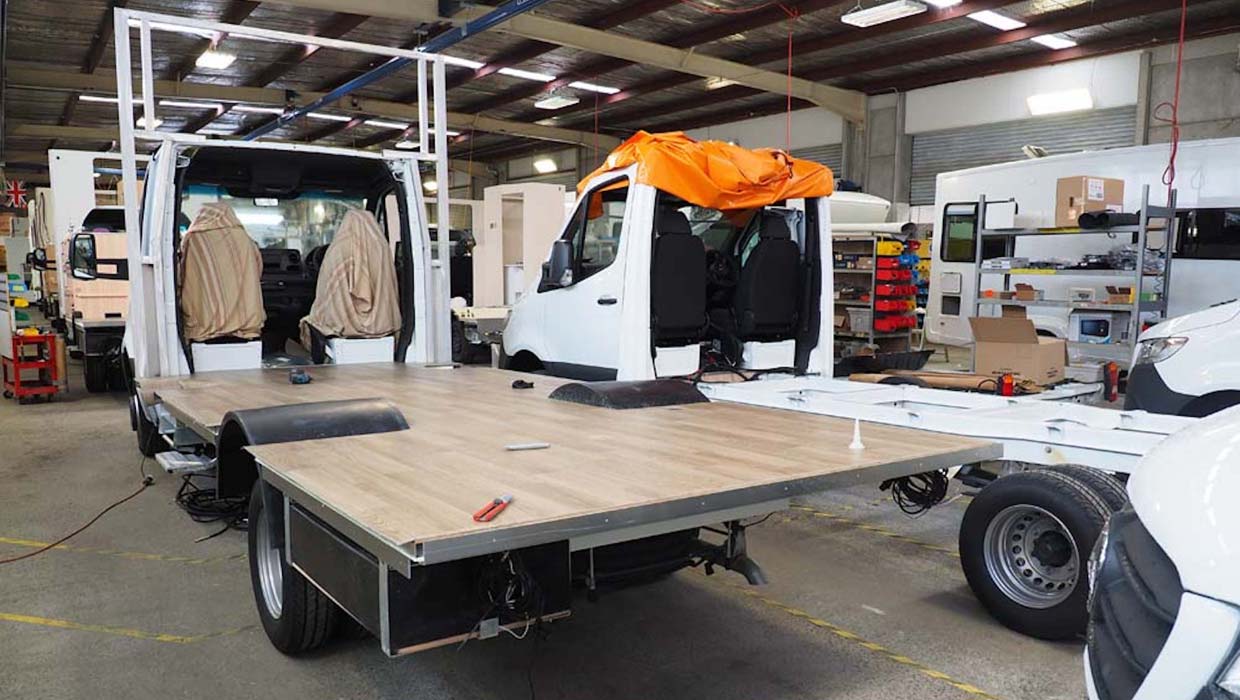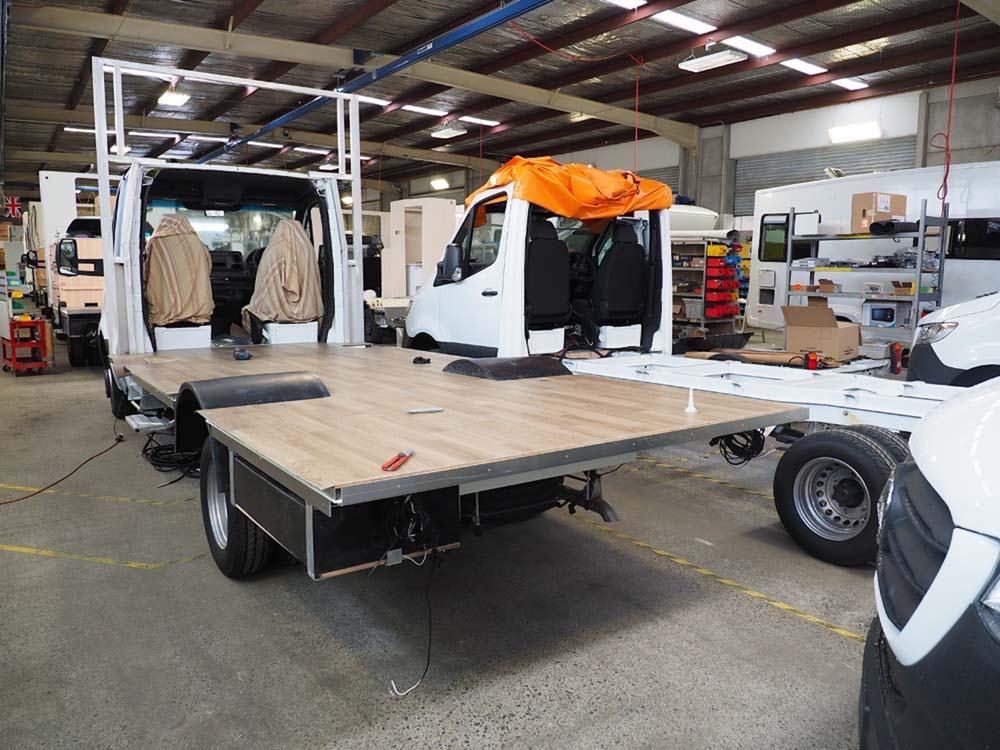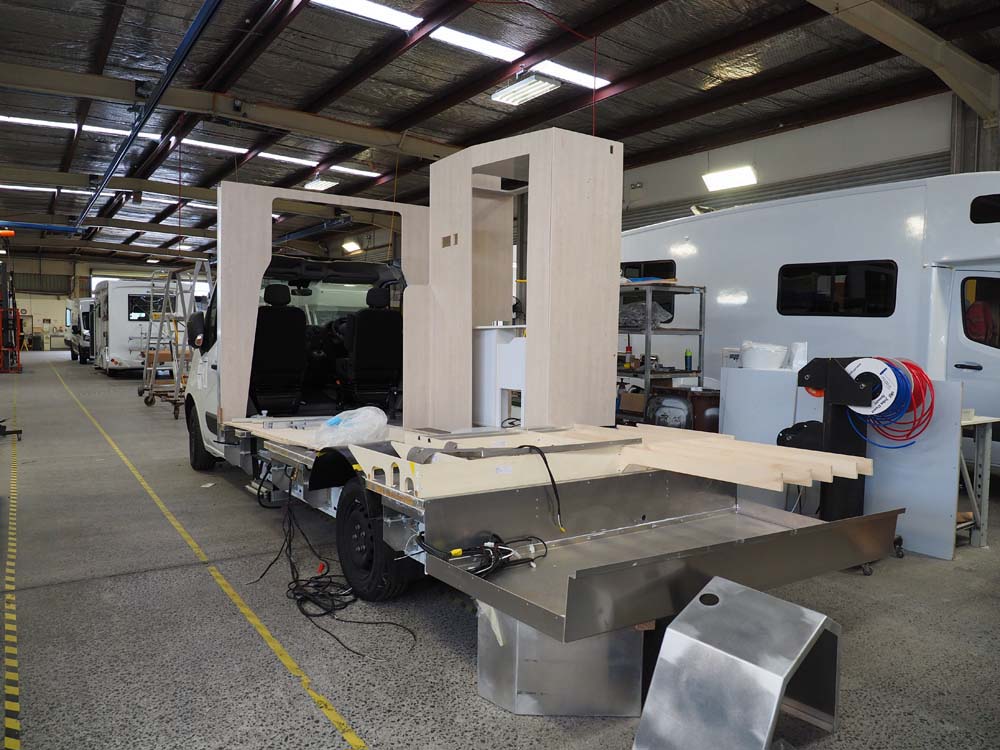Take a tour through KEA’s NZ factory
Author: Malcolm Street Date Posted: 5 August 2019

Why KEA motorhomes, made in New Zealand, by Action Manufacturing are of high quality
For anyone considering buying a motorhome and travelling around New Zealand, there is plenty of choice from imported models to those built locally, such as KEA. But what exactly is the process of construction of the KEA brand and how does it stack up against the competition?
Action is the brand that grew out of a merger between Motek and KEA Manufacturing in New Zealand. The bulk of Action’s motorhomes are manufactured for the THL rental fleet (Maui/Britz/Mighty). It also produces KEA and, in more recent times, the Everyland range for the retail market.
In addition to the Albany factory where most of that happens, vehicles such as ambulances and refrigerated transport trucks are built at Action’s Hamilton and newly acquired Takanini premises.
A PEEK INSIDE THE FACTORY

For this article though, we’ll focus on building a motorhome in a modern factory and as part of that, Action’s Managing Director, Grant Brady, was kind enough to give me a factory tour. Motorhome construction really is a series of manufacturing processes, some which happen simultaneously for efficiency and others follow a consecutive series of steps.
It all has to start somewhere and that’s usually with the arrival of a cab chassis at the Action factory. According to Grant Brady, for reliability and longevity reasons, Action mostly uses either Mercedes-Benz Sprinter or Renault Master chassis and they arrive at the factory with a bare chassis and most of the cab – the back wall is usually missing.
CONSTRUCTION BEGINS

To speed up both build time and give better accuracy, the floor is initially worked on upside down. Items such as wheel arches, steps, water tanks, gas and plumbing lines are all fitted at this stage to reduce time under the vehicle later on.
Action manufactures its own lightweight strong composite panel, branded as Omnipanel for the roof and walls, and Omnipanel for the floor system.
Omnipanel is a combination of a high UV-resistant, easy-to-repair fibreglass outer skin, and a thinner durable fibreglass inner skin, over a closed cell foam which has very high thermal characteristics called Dow Styrofoam.
The Omnifloor system is similar but with the addition of aircraft-grade alloy framing and marine grade ply. Both the floor and wall systems are all vacuum bonded together using a very high-strength two-part adhesive, rather than the more commonly used hot melt glues.

There are two items to note here. One is that the Styrofoam has small manufacturing channels which allow greater gluing surface area, and an exit path for air during panel manufacture.
The other is that the outer skins are much thicker than those used by European manufacturers. Action’s Omnifloor system, as a very strong lightweight composite construction, is also unique. Brady reckons that Action’s ‘Omni’ methodology provides better insulation and strength. And, in the unfortunate event of an accident, it is easier to repair if damaged.

Once the underfloor construction is complete, the floor is rotated right side up and attached to the chassis. As you can see, very strong commercial grade vinyls is used for the floor covering, which is then dust-sealed and water-sealed completely.
MAKING THE KEA CABINETRY

Meanwhile elsewhere in the factory, three axis CNC routers are very busy producing all the necessary body and cabinetry components.
All being CAD designed the parts are very accurate and designed to fit easily together. As the components are manufactured, they are “bundled” together for easy movement around the factory and subsequent assembly.
Brady tells me the European connector system is very IKEA-like (not KEA) and it’s been well proven in the very demanding rental product over the last 15 years.

One of the major benefits of the CNC machine can be seen here. Everything fits neatly together. The use of the European-designed cam and dowell system makes it simpler and quicker to assemble, ensuring tolerances are tight and the assembly crews can quickly produce very high quality furniture.
FITTING OUT THE MOTORHOME

With cabinetry complete, it is time to go back to the cab chassis and start the fit-out. The ‘inside-out’ technique is used here, that is much of the internal fit-out is done before the walls are added. It’s a much quicker process, easier to correct any production line problems and undertake any testing required as well.

Part of the fit-out includes safety items such as seating used when travelling. Prior to any motorhome construction all items including seat frames and seatbelt mountings are pull-tested to ensure compliance with relevant NZ and Australian road regulations.

It’s nearly time to put the walls on. Here the 30mm Omnipanel construction can clearly be seen. To minimise water leaks all the windows in THL’s rental fleets are fully bonded in place, greatly reducing movement over the hundreds of thousands of kilometres these units travel in their own fleet life.

Fitting the walls is a precision job and to minimise water leak problems and maximise strength, the full circumference of the floor has a void for adhesive, and the entire body structure is bonded together with minimal mechanical fasteners.

The luton peak structure is insulated and aerodynamically designed to reduce drag to a minimum.
TIME FOR THE ROOF

One of the final major components to go on is the roof of course. A one-piece Omnipanel item, it is 30mm thick and designed to give a good strength/insulation/weight ratio whilst being fully water-sealed.
The roof is joined to the walls with an alloy connector system, also sealed against leaks, that then has a cover strip added.

Try this quick quiz. How many tubes of bonding adhesive are needed to build one motorhome? According to Grant Brady, about 50 is the answer – Action literally order them by the container load!
THE FINISHED PRODUCT

We nearly have a completed motorhome. That little line-up of motorhomes will soon be on its way to Australia as Action builds for the cross Tasman market as well.
Manufacturing standards are something of an issue between countries but both New Zealand and Australia share many common standards and Brady told me the policy is always to work to the higher standard where there is a conflict.
About the only difference between Australian and New Zealand motorhomes is that the former has air-conditioners (fitted in Australia) as standard whilst the local product has a diesel space heater.
BENEFITS OF RENTAL MOTORHOMES

One of the benefits of being part of an organisation that operates rental motorhomes is plenty of user experience and customer feedback.
Awnings on rental motorhomes can be a bit problematic but Action has developed its own model with the twin benefits of being easy to use and there being minimal wind damage – if wind catches under the awning, it simply closes up rather than blowing away.

Coachbuilt motorhomes aren’t the only things that come out of the Action factories; there are plenty of campervans in the Maui/Britz/Mighty rental fleets, too. The body construction might be a little different, like removing the old roof and adding a hi-top, but the basics are the same.
THE BOTTOM LINE

Many new motorhomes and campervans appear out of the Action door but, in addition to that, some repairs are handled as well. Like for instance the van conversion where Brady reckons the original manufacturer didn’t get the right water ingress prevention — maybe not enough glue!

And now for something very new, one of the newly-designed Action Everland motorhomes just about to roll out of the factory door.






